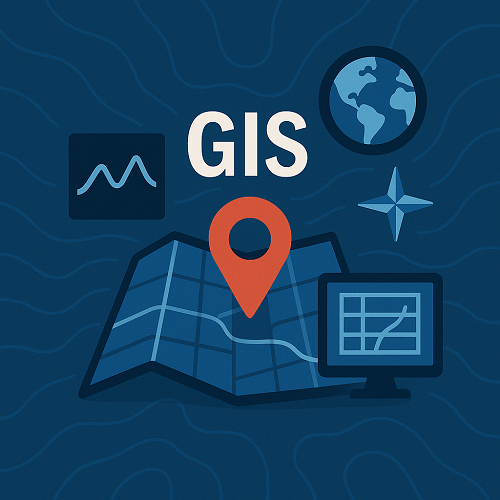TL;DR
- AI-powered spatial analytics are enhancing predictive capabilities and decision-making speed.
- Integration with IoT devices is enabling real-time geospatial data streams for urban and environmental monitoring.
- Blockchain is providing secure, tamper-proof data exchange across GIS networks.
- Drones and LiDAR technologies are revolutionizing high-precision geospatial data collection.
- Open geospatial data initiatives are fostering global collaboration and innovation.
What’s new right now
In 2025, GIS technology is embracing cutting-edge integrations with artificial intelligence, Internet of Things sensors, and real-time analytics capabilities. These transformations allow for highly adaptive, responsive geospatial systems. For example, AI algorithms now process massive environmental datasets to predict flood risks faster than traditional models (source).
IoT-linked GIS frameworks are providing live updates from infrastructure sensors, helping cities monitor traffic, energy usage, and pollution levels efficiently (source). Meanwhile, blockchain integration ensures spatial data authenticity and traceability, reducing the risk of manipulation in critical mapping operations (source).
Why it matters
For businesses, these advancements translate into faster, more reliable decision-making. Real-time GIS data enables agile adjustments to logistics, supply chains, and asset management strategies. Environmental agencies can respond promptly to dynamic events, saving time, money, and potentially lives.
Technically, integrating AI and IoT raises the sophistication of spatial analysis by automating pattern discovery and anomaly detection. Blockchain’s introduction provides a new layer of data governance that meets regulatory and compliance demands in sensitive projects.
Key Trends and Technology Comparison
| Trend/Technology | Primary Benefit | Key Challenge |
|---|---|---|
| AI-Driven GIS | Predictive analytics and automated insights | High computational requirements |
| IoT Integration | Real-time monitoring and alerts | Data security and privacy concerns |
| Blockchain Data Exchange | Immutable, verifiable spatial records | Scalability for high-volume datasets |
| Drones & LiDAR | High-resolution terrain and asset mapping | Regulatory constraints and weather dependency |
| Open Data Initiatives | Collaboration and knowledge sharing | Standardization across datasets |
Mini Case Study: Smart Flood Response
Problem
A coastal city faced recurring flash floods, causing infrastructure damage and prolonged emergency response times.
Approach
The municipality deployed IoT water level sensors integrated into the GIS platform, combined with AI models that analyzed rainfall patterns and tidal data. A blockchain system recorded sensor data to ensure authenticity for decision-makers.
Outcome
Within the first year, flood prediction accuracy improved by 25%, and emergency response time was reduced by 40%. Maintenance crews could be dispatched before street inundation, saving an estimated $2 million in damages.
Implementation Checklist
- Assess organizational geospatial needs and existing infrastructure.
- Identify AI models relevant to spatial data processing.
- Integrate IoT sensors across critical assets and geography.
- Develop a blockchain data exchange protocol.
- Train staff on real-time analytics and dashboard usage.
- Align with open data standards for collaborative projects.
- Schedule regular updates to geospatial datasets and security protocols.
FAQs
What is the role of AI in modern GIS?
AI helps automate pattern recognition, predict spatial events, and streamline data analysis, leading to faster, more accurate decisions.
How does IoT enhance GIS applications?
IoT devices feed live data to GIS, enabling continuous monitoring of assets, environmental conditions, and infrastructure health.
Why use blockchain in GIS?
Blockchain ensures that spatial data remains secure, tamper-proof, and verifiable, which is crucial for sensitive projects.
Are drones essential for GIS today?
Drones offer cost-effective, high-resolution mapping and are vital for areas difficult to access by traditional survey methods.
What are open geospatial data initiatives?
They are collaborative projects where organizations share spatial datasets freely, encouraging innovation and standardization.
How can small businesses leverage these technologies?
By adopting scalable GIS tools, small businesses can improve delivery routes, site selection, and resource allocation.
Conclusion
In 2025, GIS is no longer just a mapping tool—it is a dynamic ecosystem integrating AI, IoT, blockchain, and advanced sensing technologies to deliver actionable intelligence. Whether for urban planning, disaster management, or commercial applications, the synergy of these innovations is reshaping geospatial strategies globally. Organizations ready to adapt will find new efficiencies, competitive advantages, and collaborative opportunities. To explore our GIS services, visit GIS Technology.
